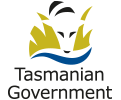Plain language in communication: guide
The Tasmanian Government’s duty to inform the public includes the obligation to communicate effectively. Information about government policies, programs and services should use plain language and proper grammar, and be expressed in a clear and consistent style.
Traditionally good readers blamed a document if they couldn’t understand it, while poor readers blamed themselves. Common beliefs for writing in a complicated way included, “It’s hard stuff so it’s got to be written that way”; “It’s a technical (or legal) document”; “I’ve got to impress the boss”.
In a reversal of the old idea that it was the reader’s responsibility to understand a document, it is now considered the writer’s responsibility to make himself/herself understood.
What is plain language?
Plain language is a clear, straightforward style of language which aims to convey a written message as effectively as possible. It is not a special or reduced version of the language; it is just every day language expressed directly and clearly.
- Plain language means using words and grammatical structures that are widely recognised and understood.
- Plain language avoids using unfamiliar words, and explains terms which could confuse the general public.
- Plain language advocates that design, layout, the use of colour and typography all contribute to how people receive and process information.
- Plain language is not about reducing sentences to “the cat sat on the mat” level; it’s about using understandable language no matter how complex the subject.
- Plain language is a full version of the language written in a style close to conversational English and which takes the reader into account.
- Plain language is ‘reader friendly’ and places responsibility on the writer’s ability to be plain, not on the reader’s ability to understand.
- Plain language is not only concerned with language; it is also about improving the organisation of written material and the way it is presented.
Why use plain language?
Generally public servants have two main reasons for communicating with their audiences: to give information and to get information.
To succeed we must ensure that our messages do not confuse our readers or conceal information. If our audiences cannot follow legal documents, information leaflets or letters, there is the risk of their breaking the law, or failing to do what is expected of them or receiving what is rightfully theirs.
It is not enough for writers just to get the facts right. Documents must be complete, accurate and use language their audience(s) can understand.
What are the benefits of plain language?
The benefits of plain language are both real and intangible in terms of time and cost savings and improved public relations.
- Plain language gets your message across in the shortest time possible.
- More people will be able to understand your message.
- There is less chance that your document will be misunderstood, so less time is spent in time-consuming explanations.
- Plain language is socially responsible.
Writing in plain language
Documents, pamphlets, brochures etc should be understandable at the first reading and not require ‘translation’. To make your documents reader-friendly:
- know your audience (i.e. keep in mind the average reader’s level of English)
- use standard, familiar language (no ‘officialese’)
- keep sentences short (an average of 15-20 words)
- keep paragraphs short.
- use personal pronouns (eg ‘you’) to speak directly to readers.
- use positives rather than negatives (‘Leave the equipment up’ rather than ‘Do not dismantle the equipment’)
- make sure the message is clear, accurate and concise (i.e. the document isn’t overloaded with superfluous information)
- avoid clichés, jargon (eg re-engineering for redesigning) or technical language and overuse of abbreviations and acronyms (if used, write them out in full the first time they are used in the document)
- use the active voice (people tend to respond because it is more direct and requires action)
- use a friendly, courteous and businesslike tone.
- include only one idea or issue in a paragraph or in the same sentence.
- present information in a logical order.
- be mindful of good layout and design.
Layout and design
Visually appealing documents are easier to understand than more traditional styles. To make your documents reader-friendly:
- Replace blocks of text with headings, tables and more white space.
- Use short sections to break up the material into easily understood segments and to introduce some white space.
- Use a table of contents for long documents.
- Use a question and answer format.
- Use informative headings.
- Use indentations and white space to improve readability.
- Use vertical lists rather than running text to highlight main ideas or clarify steps in a process.
- Use techniques like bold and italics to draw attention to important points.
But above all – use plain language!
